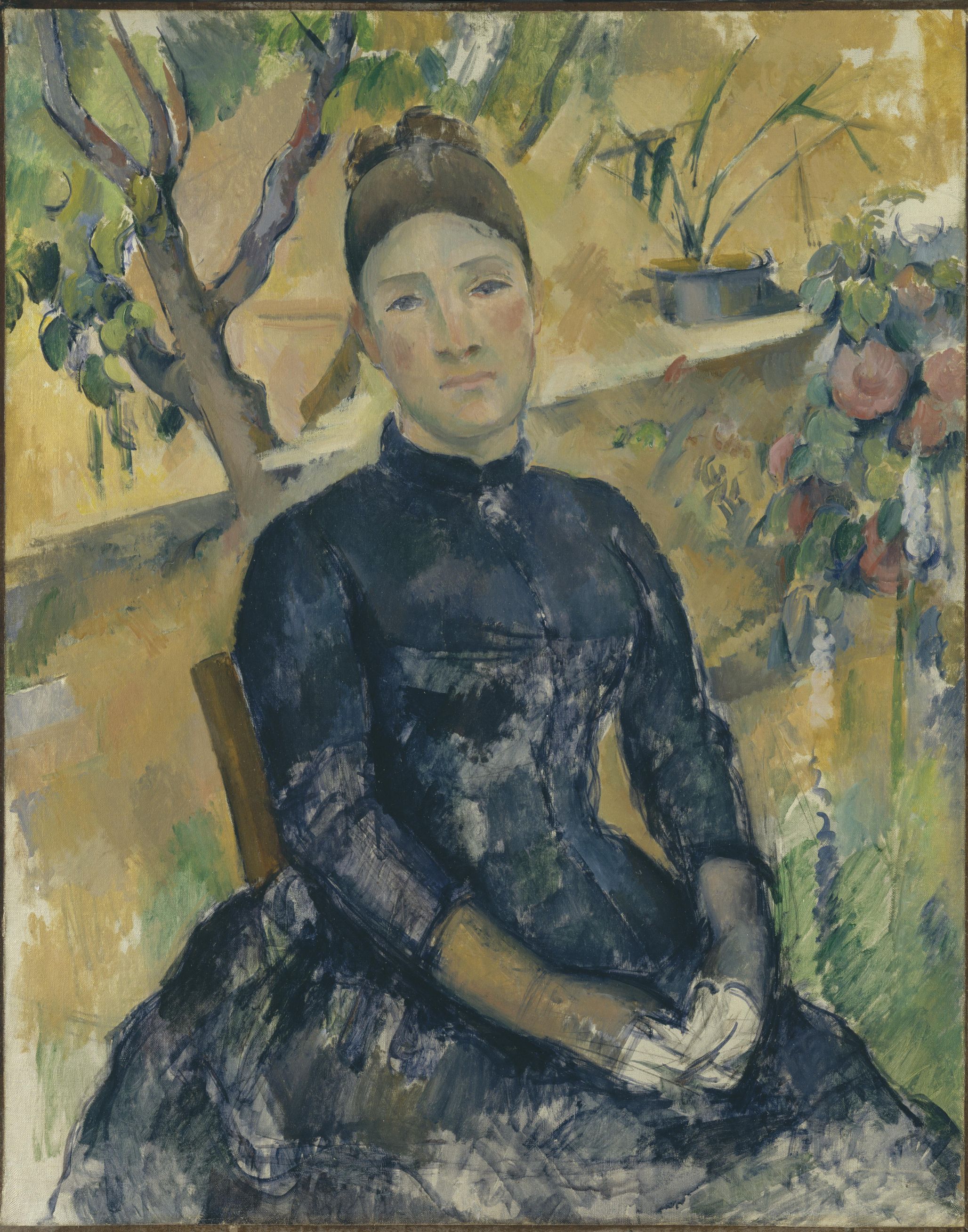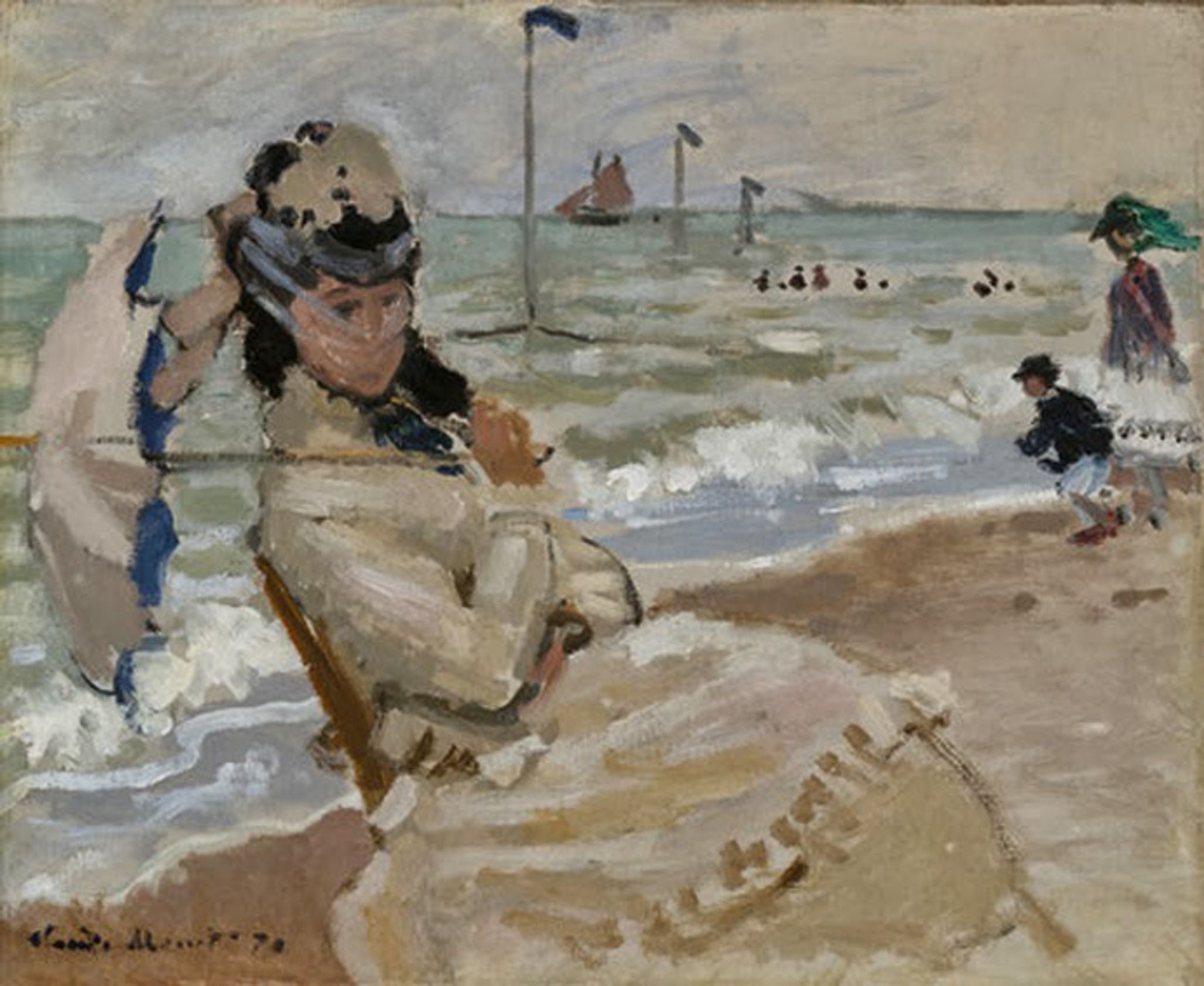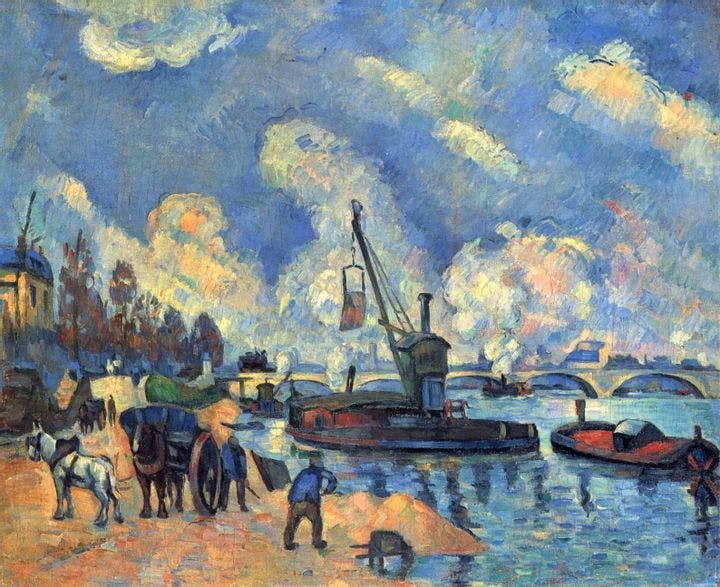Fall 2008
Married to the Muse
– Kate Christensen
Kate Christensen looks at the wives of three famous French artists, and how their lives, "no matter how difficult, painful, or uncertain, were never boring."
The library of art history is rife with biographies of The Artist—whomever he might be—as a young, middle-aged, old, and immortal man. But rarely does a book deal primarily with the woman he painted over and over, the ordinary model-wife whose face an artist immortalized in paint or bronze. Rarer still is the book that focuses on three such women and reveals them as biographical subjects in their own right.
Hidden in the Shadow of the Master is Ruth Butler’s masterfully researched examination of the lives of Hortense Fiquet, Camille Doncieux, and Rose Beuret, the three women who modeled for, bore sons to, lived in poverty with, and eventually married three of the towering artistic geniuses of their time: Paul Cézanne, Claude Monet, and Auguste Rodin, respectively. All were ordinary girls plucked from the streets of Paris by their future husbands, handpicked, apparently, with an eye toward musedom. Though they figure prominently in their husbands’ paintings and sculptures, beyond these evocations of their changing expressions, modes of dress, settings, and periods of life, little of substance was known about any of them before now.
Butler argues convincingly that her subjects are important to the history of art, and not for their faces and figures alone. At the turn of the 20th century, traditional artistic subjects, taken from myth, the Bible, and history, were giving way to a more quotidian, social, realistic mode. That Cézanne, Monet, and Rodin chose as their models the women they lived with was a revolutionary shift: The domestic and aesthetic became connected in an entirely new way. “These women,” Butler writes, “weren’t just models; they brought a whole spectrum of feelings with them, giving their husbands’ art emotional texture and substance, contributing elements for art as important as the light in which a scene is bathed, the space where an object sits, or movements that provide real character in a scene or to a figure.”
Butler, a professor emerita at the University of Massachusetts, Boston, and the author of a biography of Rodin, re-creates these muses from a female, modern-day standpoint, so that we can feel, viscerally, looking at the paintings and sculptures of them, what it must have been like to keep house for their men, to live with them day in and day out, to contend with their moods, egos, and great gifts. The lives of both husband and wife were, in each case, inextricably intertwined and yet fraught with inequality.

The odd, curiously detached alliance between Hortense Fiquet and Paul Cézanne began sometime in 1869 and lasted until his death in 1906. Cézanne’s model-wife, “a sometimes handsome, sometimes plain, brunette with large dark eyes,” was of lowly birth and 11 years his junior. She was also talkative and opinionated, and she spent too much money. The “blunt, graceless, balding” Cézanne, who generally feared women and disliked being touched, was fond enough of the young Fiquet to risk his income, which he received from his father and which was contingent on his remaining single, to live with her in secrecy. He also concealed the birth of their son Paul, but it wasn’t long before his parents discovered the existence of his household and reduced his allowance by half, thus creating a life of peripatetic poverty for the small family. (One advantage of using Fiquet as a model must have been that her services cost Cézanne nothing.)
Most of Cézanne’s friends disliked Fiquet. She was apparently frank to the point of insulting regarding his work. Matisse recounted to a friend that Fiquet once told him, “You know Cézanne did not really know what he was doing. He didn’t know how to finish his paintings. Renoir, Monet, they really knew their métier as painters.” Art critic Roger Fry described her, in 1925, as a “sour-looking bitch.”
Butler does not join that chorus. “Everyone who knew Hortense spoke of her gregarious nature, her love of conversation,” Butler writes, and sitting for at least 27 portraits, having to be still and quiet for so many hours on end, must have been difficult work, even if she could not always adequately appreciate the results. “Having invested so much of herself in these images, it’s worthwhile wondering how Hortense saw them,” Butler adds. “From what little we know, she did not see them very well. But then, there was only a small coterie of people who could really ‘see’ Cézanne’s work in the 19th century.”
In spite of Butler’s efforts to round out her subject, Fiquet “remains a puzzle.” There is not enough information recorded about her for a biographer or reader to feel a strong, clear, complex sense of who she was apart from her husband. In lieu of her own definitive appraisal of Fiquet, Butler cites their long artistic collaboration as proof of the strong feelings they had for each other. “These two people counted for each other.”
Camille Doncieux and Claude Monet likely met in Batignolles, a Paris neighborhood where many young artists lived, when Doncieux was a teenager. “It’s not hard to imagine the slender, dark-haired Camille Doncieux doing her errands in these streets, catching the eye of Claude Monet on one of his forays to the café,” Butler conjectures. “He would surely have noted her bearing, the way she walked, the way she made every item of dress look stylish and fine.”

Where Fiquet “brought solidity and patience” to Cézanne’s work, “young Camille Doncieux brought a sense of style and an instinctive taste for feminine elegance to the painting of Claude Monet.” In his review of the Salon of 1859 art exhibition, Butler observes, Charles Baudelaire urged that the costumes, coiffures, and gestures of the “contemporary woman” were bracingly modern subjects in painting. This was what Monet wanted to capture in his Déjeuner sur l’herbe (1865–66), in which five beautifully dressed women—three of whom Doncieux modeled for, Butler posits—enjoy an idyll in the woods with six young men and a servant. (This work should not to be confused with Édouard Manet’s 1863 painting of the same name, in which the principal female model is nude.) The grace of Doncieux’s elegantly draped body, not her face, is the focus of Monet’s portraits of her.
Unlike Fiquet and Cézanne, Doncieux and Monet were happy together, despite severe money troubles. She bore him a son, Jean, at 20. During their time in Bennecourt, a placid hamlet on the Seine, Monet painted Doncieux’s portrait as she sat on the riverbank. Butler, scrutinizing the painting, delivers a beautiful description of the artist-muse relationship when she asks “whether Camille sensed that her own place in the scene was less that of an actress, as before, and more that of observer and anchor.”
When Doncieux was 23, they married. Rumor has it that Monet wed her for her dowry of 12,000 francs. But what part did love play? “From all evidence Camille Doncieux was a lovable charmer—a favorite amongst Monet’s friends,” Butler writes. Her husband “both used and ill-used” her, but “he adored his son, and he certainly loved her.” For Doncieux, “the marriage was the ultimate promise. No matter how frequent his absences, she would not be abandoned.”
But neither was she to enjoy a stable or predictable existence. The very next year, 1871, found her posing for a painting called Repose, clearly depressed and lonely in a dreary London flat, slumped on a chaise longue. Less than four years later, however, the Monets were the owners of a house in Paris, thanks to an upswing in Claude’s painting career. After her terrible death in 1879 following a protracted illness, Monet painted one of his most beautiful portraits of her, Camille on Her Deathbed. In her shroud, she looks almost like a bride asleep.
Butler’s empathetic imagination is especially incisive in her treatment of Rose Beuret, an uneducated girl from the hinterlands who was working as a seamstress in a factory when Rodin hired her to sit for him. She was tiny and strong, and, as the model for the bust Mignon (c. 1864–65), fiercely beautiful, with high cheekbones, her gaze direct and alive. Rodin admired her “physical vigor and her firm flesh of a peasant’s daughter, she had that lively, frank, definite, masculine charm that augments the beauty of a woman’s body.”
She quickly bore him a son, after which the family moved to Montmartre, where Beuret posed and oversaw Rodin’s studio. Both of them worked extremely hard. Nothing is known of her inner life; she could barely write. But the ated were passionate, tender, and filled with longing. By the time she was in her late twenties she had aged a good deal, or so we can surmise from a portrait Rodin painted of her; it has always been known as The Mother of the Artist. However, Butler’s case that the model was his wife is vividly convincing. Butler chronicles the physical changes the painting illustrated, then adds that Rodin “focused on a singular quality of Rose that remained part of her character all her life—her intensity and her passion.”
Beuret in her early old age had a famously bad temper, failing health, and a morbidly shy personality. She remained devoted to Rodin, even during their separations and his love affairs. At the end of their lives, they lived in a villa in Meudon, southwest of Paris. Rodin was a celebrated genius, and Beuret was a furtive, strange old woman who organized dinners and lurked about the property in old clothes.
Rodin and Beuret finally married in 1917, when Beuret was 72. Butler’s account of the period leading up to their wedding is the most touching passage in the book. Rose was sick; Rodin was exhausted. They had no money. The villa was in a shambles. The country was at war. They wrote their wills. In the cold winter of 1916–17, Rodin borrowed the money to buy her a gold ring. About two weeks after their January 29 wedding, Beuret died of pneumonia; when Rodin died later that year, he was buried next to her in their garden. The image of their two bodies lying forever side by side is a fitting metaphor for the complex partnerships this unusual book lays bare.
Hidden in the Shadow of the Master illuminates without softening or mitigation the similar ways in which all three women suffered immensely because of their affiliations with men of artistic genius. So many of the things women hoped to gain in those days by marrying were closed off to them: legitimacy, security, social status. But as this book makes amply evident, these women’s lives, no matter how difficult, painful, or uncertain, were never boring. Butler has shown that the silent muse is a compelling subject in her own right.
* * *
Kate Christensen is the author of four novels, the most recent of which, The Great Man, won the PEN/Faulkner Award for Fiction.
Reviewed: Hidden in the Shadow of the Master: The Model-Wives of Cézanne, Monet, and Rodin by Ruth Butler, Yale University Press, 354 pp, 2010.
Image courtesy of Wikimedia Commons
